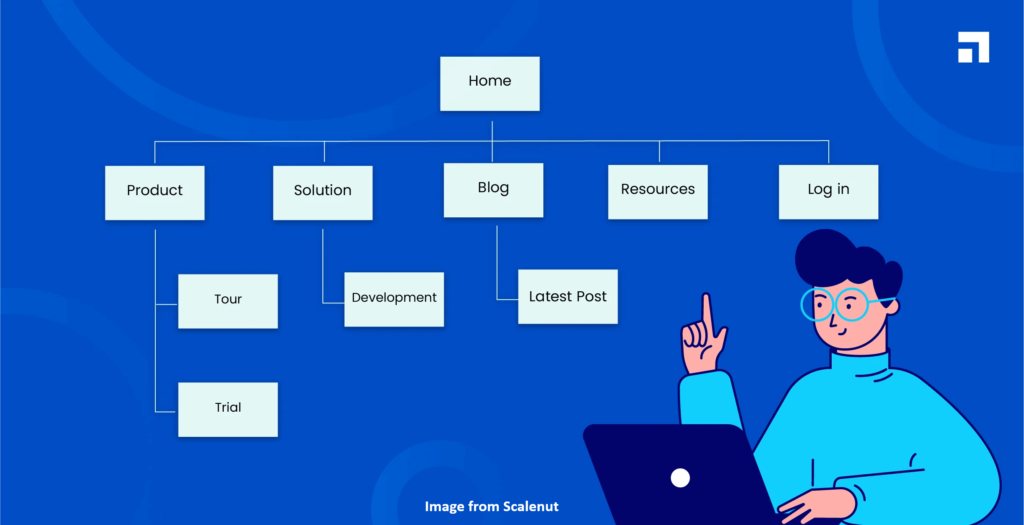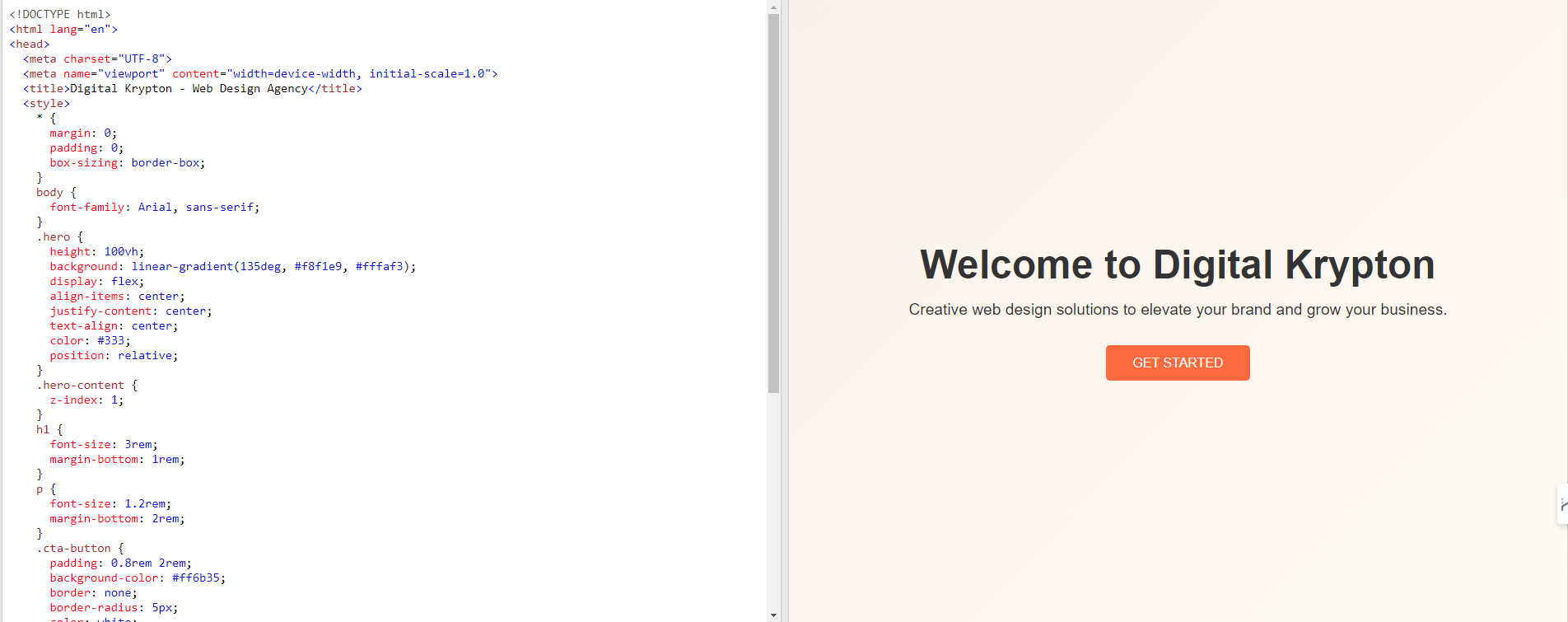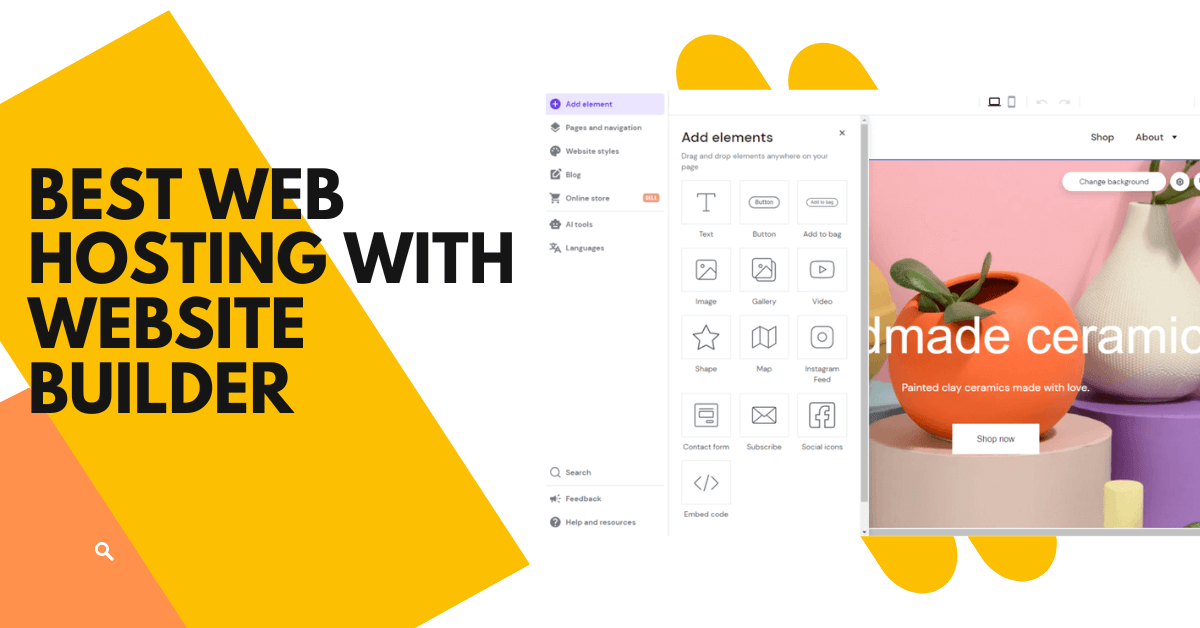What is Web Design and Development?
Web design and development is the art and science of creating websites. It encompasses a wide range of disciplines and skills, blending creativity and technical expertise to craft online experiences that are both visually appealing and functionally robust. Think of it as the process of bringing your digital vision to life, building a virtual space where you can connect with your audience, share your message, and achieve your online goals.
But web design and development is more than just making websites look pretty. It’s about understanding user needs, crafting intuitive navigation, and delivering seamless functionality. It’s about creating a digital experience that is both engaging and effective, whether you’re building an e-commerce store, a blog, a portfolio, or a complex web application.
A Brief History
The journey of web design and development began in the early 1990s with the birth of the World Wide Web. The first websites were simple, text-based pages with limited functionality. As technology evolved, so did the possibilities. The introduction of HTML, CSS, and JavaScript paved the way for more visually appealing and interactive websites.
The rise of web design and development as a specialized field marked a turning point in the digital revolution. Websites transformed from static online brochures to dynamic platforms for communication, commerce, and creativity. Today, web design and development continue to evolve at an unprecedented pace, driven by advancements in mobile technology, user experience design, and web development frameworks.
The Importance in Today’s Digital World
In today’s interconnected world, a website is often the first point of contact between a business and its customers. A well-designed and developed website can make a lasting impression, build brand credibility, attract new customers, and drive business growth. For individuals and organizations alike, a website serves as a platform to share their stories, showcase their work, and connect with a global audience.
Whether you’re a small business owner looking to establish an online presence, an artist showcasing your portfolio, or a non-profit organization spreading awareness for your cause, web design and development empower you to create a digital space that reflects your unique identity and achieves your online objectives.
The Synergy of Design and Development
Web design and development are two sides of the same coin. While distinct in their focus, they work in harmony to create a successful website.
- Web design focuses on aesthetics and user experience (UX). It’s about creating a visually appealing and user-friendly interface that is both intuitive and engaging.
- Web development focuses on functionality and technical implementation. It’s about bringing the design to life through coding, ensuring the website performs seamlessly and delivers a smooth user experience.
The best websites are born from a close collaboration between designers and developers. Designers bring their creative vision and understanding of user behavior, while developers translate those ideas into a functional and interactive online experience. This synergy is essential for creating websites that are both beautiful and effective.
Digital Krypton: Your Partner in Web Design and Development
At Digital Krypton, we understand the power of a well-crafted website. Our team of experienced designers and developers is passionate about creating bespoke online experiences that align with your brand identity and business goals. We offer exclusive and affordable web design and development services, tailored to your specific needs and budget. Whether you’re looking to launch a new website or revamp your existing online presence, we’re here to help you achieve your digital aspirations.
The Web Design and Development Process: A Step-by-Step Guide
Creating a website is like constructing a building. It requires careful planning, meticulous execution, and ongoing maintenance to ensure a solid and enduring structure. Whether you’re building a simple landing page or a complex web application, understanding the web design and development process is crucial for achieving your online goals.
Here’s a step-by-step guide to navigate the journey of bringing your digital vision to life:
1. Information Gathering
Before a single line of code is written or a design element is sketched, it’s essential to gather information and lay the groundwork for your project. This involves:
- Understanding Client Needs: If you’re building a website for a client, delve deep into their business goals, target audience, and desired functionalities. What do they want to achieve with their website? Who are they trying to reach? What kind of experience do they want to create?
- Target Audience Research: Who are you building this website for? Understanding your target audience’s demographics, interests, and online behavior is crucial for creating a website that resonates with them. Conduct surveys, analyze website analytics, and research your target audience’s online habits to gain valuable insights.
- Competitive Analysis: Take a look at your competitors’ websites. What are they doing well? What could be improved? Analyzing your competition can provide valuable inspiration and help you identify opportunities to differentiate your website.
Example Questions to Ask Clients:
| Question | Purpose |
| What are your business goals for this website? | Understand their objectives (e.g., lead generation, sales, brand awareness). |
| Who is your target audience? | Identify demographics, interests, and online behavior. |
| Do you have any existing branding guidelines? | Ensure consistency with their brand identity. |
| What features and functionalities do you need? | Determine the scope of the project (e.g., contact forms, e-commerce, blog). |
| Do you have any examples of websites you like? | Gain inspiration and understand their preferences. |
2. Planning
With a clear understanding of your goals and target audience, it’s time to start planning the structure and functionality of your website. This involves:
- Creating a Sitemap: A sitemap is a visual representation of your website’s structure, outlining the hierarchy of pages and their relationships. It helps you organize your content and ensure a logical flow for users.
- Developing Wireframes: Wireframes are low-fidelity mockups that outline the basic layout and structure of each page. They focus on functionality and content placement rather than visual design.
- Defining User Flows: User flows illustrate the paths users take to complete specific actions on your website, such as making a purchase or signing up for a newsletter. They help you identify potential pain points and optimize the user experience.
Visual Example of a Sitemap:

3. Design
This is where your creative vision takes shape. The design phase involves translating your planning into a visually appealing and user-friendly interface.
- Visual Elements: Choose colors, fonts, and imagery that align with your brand identity and create a cohesive aesthetic.
- Branding: Integrate your brand elements (logo, colors, typography) throughout the website to reinforce brand recognition.
- User Interface (UI) Design: Focus on creating an intuitive and engaging interface that is easy to navigate and use.
- User Experience (UX) Design: Ensure the website is user-centered, providing a seamless and enjoyable experience for visitors.
4. Content Creation
Compelling content is essential for engaging your audience and communicating your message effectively.
- Content Strategy: Develop a content strategy that aligns with your business goals and target audience.
- Writing for the Web: Create clear, concise, and informative content that is optimized for readability and SEO.
- Content Management System (CMS): Choose a CMS like WordPress to easily manage and update your website content.
5. Development
This is where the technical magic happens. Developers use code to bring your design to life and create a functional website.
- Front-End Development: HTML, CSS, and JavaScript are used to create the user interface and interactivity of the website.
- Back-End Development: Server-side programming languages and databases are used to handle data storage, user authentication, and other behind-the-scenes functionalities.

6. Testing and Launch
Before launching your website, thorough testing is crucial to ensure everything works as intended.
- Functionality Testing: Verify that all features and functionalities work correctly.
- Usability Testing: Test the website with real users to identify any usability issues and gather feedback.
- Responsiveness Testing: Ensure the website displays correctly on different devices (desktops, tablets, smartphones).
- Cross-Browser Compatibility: Test the website on various web browsers (Chrome, Firefox, Safari, Edge) to ensure consistent functionality and appearance.
7. Maintenance
Once your website is live, ongoing maintenance is essential to keep it secure, up-to-date, and performing optimally.
- Updates: Regularly update your website software, plugins, and themes to ensure security and compatibility.
- Security: Implement security measures to protect your website from hacking and malware.
- Content Management: Keep your website content fresh and relevant by regularly adding new content and updating existing information.
- Performance Optimization: Monitor your website’s performance and make necessary adjustments to ensure fast loading times and optimal user experience.
Key Elements of Web Design: Creating Engaging and User-Friendly Experiences
Web design is where the magic of user experience (UX) meets visual aesthetics. It’s about crafting an online experience that is both beautiful and functional, guiding users seamlessly through your website and leaving a lasting positive impression. Let’s delve into the key elements that contribute to exceptional web design:
User Experience (UX) Design
UX design is the foundation of a successful website. It’s about understanding your users’ needs, behaviors, and motivations to create an intuitive and enjoyable browsing experience. Key principles of UX design include:
- User Research: Conducting user interviews, surveys, and usability testing to gather insights into user needs and preferences.
- Information Architecture: Organizing and structuring website content in a logical and user-friendly way.
- Interaction Design: Designing interactive elements that are intuitive and easy to use.
- Usability Testing: Evaluating the website’s usability with real users to identify areas for improvement.
By prioritizing UX design, you can create websites that are easy to navigate, engaging, and effective in achieving their intended purpose.
User Interface (UI) Design
UI design focuses on the visual elements and interactivity of the website. It’s about creating an aesthetically pleasing and user-friendly interface that aligns with your brand identity and enhances the user experience. Key aspects of UI design include:
- Visual Hierarchy: Using visual cues like size, color, and spacing to guide users’ attention and prioritize information.

- Typography: Selecting appropriate fonts that are legible, aesthetically pleasing, and consistent with your brand.

- Color Theory: Using color strategically to evoke emotions, create visual interest, and guide user actions.

- Layout and Composition: Arranging elements on the page in a visually balanced and harmonious way to create a clear and engaging user flow.
Digital Krypton’s Design Expertise
At Digital Krypton, we understand the nuances of UX and UI design. Our experienced designers craft visually stunning and user-friendly websites that captivate your audience and drive conversions. We prioritize user-centered design principles and leverage the latest design trends to create websites that are both aesthetically pleasing and functionally effective.
Key Elements of Web Development: Building the Foundation of Your Website
While web design focuses on the visual and experiential aspects of a website, web development provides the underlying structure and functionality that brings those designs to life. It’s the engine that powers your website, enabling interactive features, dynamic content, and seamless user experiences. Let’s explore the key elements that form the backbone of web development:
Front-End Development
Front-end development is all about creating the user interface (UI) – the part of the website that users see and interact with. It involves using coding languages to translate design mockups into a functional and interactive web page. The core technologies of front-end development include:
- HTML (HyperText Markup Language): The foundational language for structuring web content, and defining headings, paragraphs, images, and other elements.
- CSS (Cascading Style Sheets): The language used to style the visual presentation of web pages, controlling colors, fonts, layout, and responsiveness.
- JavaScript: The programming language that adds interactivity and dynamic behavior to websites, enabling features like animations, form validations, and real-time updates.
Example of HTML, CSS, and JavaScript in Action:

In this example, HTML defines the structure (heading, paragraph, button), CSS styles the heading with a blue color, and JavaScript adds an alert message when the button is clicked.
Back-End Development
Back-end development focuses on the server side of web development, the behind-the-scenes magic that powers website functionality. It involves:
- Server-Side Programming: Using languages like Python, PHP, Ruby, or Java to create the logic and functionality of web applications.
- Databases: Storing and managing website data, such as user information, product details, and content.
- APIs (Application Programming Interfaces): Connecting your website to other applications and services, enabling features like social media logins, payment processing, and data retrieval.
Frameworks and Libraries
Frameworks and libraries are pre-written code modules that provide a foundation for web development, simplifying common tasks and accelerating the development process. Popular frameworks include:
- React: A JavaScript library for building user interfaces with a focus on component-based architecture.
- Angular: A comprehensive framework for building complex web applications with features like data binding and routing.
- Vue.js: A progressive framework that is easy to learn and use, ideal for single-page applications and interactive components.
Content Management Systems (CMS)
A CMS like WordPress provides a user-friendly interface for managing website content, allowing users to create, edit, and publish content without coding knowledge. CMS platforms offer:
- Content Management: Easy-to-use tools for creating and managing website pages, blog posts, and other content.
- Themes and Plugins: A wide range of pre-designed themes and plugins to customize the website’s appearance and functionality.
- User Management: Tools for managing user roles and permissions.
Version Control
Version control systems like Git allow developers to track changes to their code, collaborate on projects, and revert to previous versions if needed. Git is an essential tool for managing web development projects, ensuring code integrity, and facilitating teamwork.

Testing and Debugging
Thorough testing and debugging are crucial for ensuring a website functions correctly and provides a seamless user experience. This involves:
- Unit Testing: Testing individual components of the code to ensure they work as expected.
- Integration Testing: Testing how different components of the website work together.
- User Acceptance Testing (UAT): Testing the website with real users to identify any usability issues.
- Debugging: Identifying and fixing errors in the code.
Web Design and Development Tools: Enhancing Your Workflow
In the world of web design and development, having the right tools can significantly impact your efficiency, creativity, and overall success. From design software to code editors and project management tools, a wide range of resources are available to streamline your workflow and empower you to create exceptional websites.
Design Tools
Design tools are essential for creating visual mockups, prototypes, and user interfaces. They provide a canvas for bringing your design ideas to life and allow you to experiment with different layouts, colors, and typography. Popular design tools used in web design and development include:
- Figma: A collaborative design tool that allows multiple designers to work on the same project simultaneously. It’s known for its user-friendly interface, vector editing capabilities, and prototyping features.
- Adobe XD: A powerful design and prototyping tool from Adobe Creative Cloud, offering a comprehensive set of features for creating interactive prototypes, wireframes, and user flows.
- Sketch: A vector-based design tool popular among Mac users, known for its intuitive interface and focus on UI design.
Comparison of Design Tools
| Feature | Figma | Adobe XD | Sketch |
| Platform | Web-based, Mac, Windows, Linux | Mac, Windows | Mac only |
| Collaboration | Real-time collaboration | Collaboration features | Limited collaboration |
| Prototyping | Interactive prototyping | Advanced prototyping | Basic prototyping |
| Pricing | Free plans are available and paid plans for teams | Part of Adobe Creative Cloud subscription | One-time purchase or subscription |
Code Editors
Code editors are where developers write and edit code. They provide features like syntax highlighting, autocompletion, and debugging tools to streamline the coding process and improve efficiency. Popular code editors used in web design and development include:
- Visual Studio Code (VS Code): A free and open-source code editor from Microsoft, known for its extensibility, customization options, and powerful debugging features.
- Sublime Text: A lightweight and fast code editor with a minimalist interface, popular for its speed and efficiency.
- Atom: A free and open-source code editor developed by GitHub, known for its hackability and customization options.
Version Control Systems
Version control systems like Git are essential for managing code changes, collaborating on projects, and tracking different versions of your codebase. They allow you to:
- Track Changes: Record every modification made to your code, providing a history of your project’s development.
- Collaborate with Ease: Multiple developers can work on the same project simultaneously without overwriting each other’s changes.
- Revert to Previous Versions: Easily revert to earlier versions of your code if needed.
GitHub is a popular web-based platform for hosting Git repositories, providing a centralized location for storing and managing your code.
Browser Developer Tools
Modern web browsers like Chrome, Firefox, and Safari come with built-in developer tools that allow you to inspect website code, debug JavaScript, analyze network requests, and test website performance. These tools are invaluable for front-end developers and web designers to identify and resolve issues, optimize website performance, and ensure cross-browser compatibility.
Project Management Tools
Project management tools help you organize tasks, collaborate with teams, and track progress on web design and development projects. Popular tools include:
- Trello: A visual project management tool that uses boards, lists, and cards to organize tasks and track progress.
- Asana: A comprehensive project management tool with features for task management, team collaboration, and project tracking.
- Jira: A popular project management tool used in agile development, offering features for issue tracking, bug tracking, and project planning.
Digital Krypton’s Toolkit
At Digital Krypton, we leverage a suite of cutting-edge web design and development tools to streamline our workflow, enhance collaboration, and deliver exceptional results for our clients. We stay up-to-date with the latest technologies and tools to ensure we’re using the most effective solutions for your web design and development needs.
Career Paths in Web Design and Development: Which Path is Right for You?
The world of web design and development offers a diverse range of career paths for creative and tech-savvy individuals. Whether you’re passionate about visual aesthetics, coding intricate functionalities, or crafting seamless user experiences, there’s a role for you in this dynamic and ever-evolving field.

Front-End Developer
Front-end developers are the architects of the user interface (UI). They bring website designs to life, using HTML, CSS, and JavaScript to create interactive and visually engaging experiences. They are responsible for:
- Translating design mockups into code: Converting visual designs into functional web pages.
- Ensuring cross-browser compatibility: Making sure websites look and function correctly across different web browsers.
- Optimizing website performance: Improving website speed and efficiency.
- Implementing user interface interactions: Adding interactive elements like animations, forms, and dynamic content.
Skills: HTML, CSS, JavaScript, responsive design, version control (Git), testing and debugging.
Career Outlook: The demand for skilled front-end developers is consistently high, with a projected job growth rate exceeding the average for all occupations.
Back-End Developer
Back-end developers are the masterminds behind the scenes. They work on the server side of web development, building the logic and functionality that power websites and web applications. They are responsible for:
- Developing server-side applications: Creating the code that runs on web servers to handle data processing, user authentication, and other functionalities.
- Managing databases: Storing, organizing, and retrieving website data.
- Building APIs: Creating interfaces for different applications to communicate with each other.
- Ensuring website security: Implementing security measures to protect websites from hacking and data breaches.
Skills: Server-side programming languages (Python, PHP, Ruby, Java), database management, API development, security best practices.
Career Outlook: Back-end developers are in high demand, with excellent job prospects and competitive salaries.
Full-Stack Developer
Full-stack developers are the versatile all-rounders of the web development world. They possess both front-end and back-end skills, enabling them to work on all aspects of website development. They are responsible for:
- Building complete web applications: Handling both the user interface and the server-side logic.
- Working with databases and APIs: Managing data storage and integration with other applications.
- Ensuring website performance and security: Optimizing website speed, security, and scalability.
Skills: A combination of front-end and back-end skills, including HTML, CSS, JavaScript, server-side programming languages, database management, and API development.
Career Outlook: Full-stack developers are highly sought-after due to their versatility and ability to handle all aspects of web development.
UX/UI Designer

UX/UI designers are the champions of user-centered design. They focus on creating websites and applications that are both user-friendly and visually appealing. They are responsible for:
- Conducting user research: Understanding user needs, behaviors, and preferences.
- Designing user flows and wireframes: Mapping out the user journey and creating prototypes for usability testing.
- Creating user interfaces: Designing the visual layout, interactivity, and aesthetics of websites and applications.
- Conducting usability testing: Evaluating the website’s usability with real users and making improvements based on feedback.
Skills: User research, information architecture, interaction design, visual design, prototyping tools, usability testing.
Career Outlook: The demand for UX/UI designers is rapidly growing as businesses prioritize user experience and customer satisfaction.
Web Designer
Web designers focus primarily on the visual aspects of website creation. They are responsible for:
- Creating visually appealing website designs: Using design principles and software to create aesthetically pleasing layouts and user interfaces.
- Developing brand identities: Translating brand guidelines into visual elements for websites.
- Creating mockups and prototypes: Visualizing website designs and user flows.
- Collaborating with developers: Working with developers to implement their designs and ensure a cohesive user experience.
Skills: Visual design principles, graphic design software (Adobe Photoshop, Illustrator, Figma), typography, color theory, layout, and composition.
Career Outlook: Web designers continue to be in demand, especially those with strong UX/UI skills and experience with modern design tools.
Typical Salaries and Job Outlook
| Career Path | Median Annual Salary (USD) | Job Outlook (2021-2031) |
| Front-End Developer | $77,030 | 29% (much faster than average) |
| Back-End Developer | $80,050 | 22% (much faster than average) |
| Full-Stack Developer | $101,790 | 29% (much faster than average) |
| UX/UI Designer | $78,600 | 23% (much faster than average) |
| Web Designer | $60,880 | 23% (much faster than average) |
Source: U.S. Bureau of Labor Statistics
Digital Krypton Partner Programs: Launching Your Web Design and Development Career
Whether you’re aspiring to be a front-end developer, a UX designer, or a full-stack wizard, Digital Krypton can help you launch your career in web design and development. We offer exclusive and affordable training programs, mentorship opportunities, and hands-on experience to equip you with the skills and knowledge needed to succeed in this exciting field.
FAQs about Web Design and Development
Navigating the world of web design and development can be overwhelming, especially with the abundance of information and technical jargon. To help you gain clarity and make informed decisions, we’ve compiled answers to some frequently asked questions about this dynamic field:
What is the difference between web design and web development?
While often used interchangeably, web design and web development are distinct disciplines that work together to create a complete website.
- Web design focuses on the visual aesthetics, user experience (UX), and user interface (UI) of the website. It involves creating the layout, choosing colors and fonts, and arranging elements to ensure an engaging and user-friendly experience.
- Web development focuses on the technical implementation and functionality of the website. It involves coding the website’s features, integrating with databases, and ensuring the website performs optimally.
Think of it this way: web designers are the architects and interior designers, while web developers are the construction workers who bring the vision to life.
How much does it cost to design and develop a website?
The cost of web design and development can vary significantly based on several factors, including:
- Website complexity: A simple website with basic features will cost less than a complex e-commerce platform or web application.
- Design customization: Using pre-designed templates is generally more affordable than creating a custom design from scratch.
- Functionality: Adding advanced features like e-commerce integration, membership systems, or interactive elements will increase the cost.
- Development time: The more time it takes to design and develop the website, the higher the cost will be.
- Agency or freelancer: Hiring a web design agency typically costs more than hiring a freelance web designer.
A basic website can cost a few hundred to a few thousand dollars, while a complex website can cost tens of thousands of dollars or more. It’s important to get quotes from multiple providers and compare pricing based on your specific needs and budget.
How long does it take to design and develop a website?
The timeline for web design and development depends on the scope of the project, the complexity of the design, the number of features, and the responsiveness of the client. A simple website can take a few weeks to complete, while a complex website can take several months.
What skills are needed for web design and development?
Web design and development require a blend of technical and creative skills. Some essential skills include:
- Web design: Visual design principles, typography, color theory, layout and composition, UX/UI design principles, design tools (Figma, Adobe XD).
- Web development: HTML, CSS, JavaScript, server-side programming languages (Python, PHP, Ruby), database management, version control (Git), testing and debugging.
How can I learn web design and development?
There are numerous resources available to learn web design and development, including:
- Online courses: Platforms like Coursera, Udemy, and Codecademy offer a wide range of web design and development courses for all skill levels.
- Bootcamps: Intensive training programs that provide immersive learning experiences and prepare you for a career in web development.
- Books and tutorials: Numerous books and online tutorials cover various aspects of Website design and development.
- Online communities: Engage with other web designers and developers in online forums and communities to learn from their experiences and get support.
What is the future of Website design and development?
Web design and development is a constantly evolving field, driven by advancements in technology and changing user expectations. Some key trends shaping the future of this field include:
- Artificial intelligence (AI): AI is being used to automate tasks, personalize user experiences, and improve website performance.
- Voice search optimization: Optimizing websites for voice search queries is becoming increasingly important.
- Mobile-first design: Designing websites primarily for mobile devices is crucial in today’s mobile-centric world.
- Progressive web apps (PWAs): PWAs offer app-like experiences within a web browser, blurring the lines between websites and mobile apps.
- Accessibility: Creating websites that are accessible to people with disabilities is becoming a priority.
By staying up-to-date with the latest trends and technologies, web designers and developers can create innovative and engaging online experiences that meet the evolving needs of users.




















